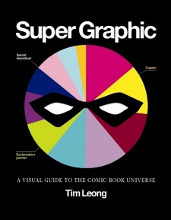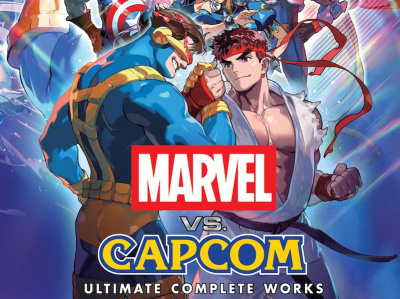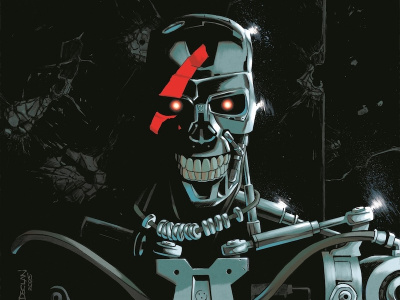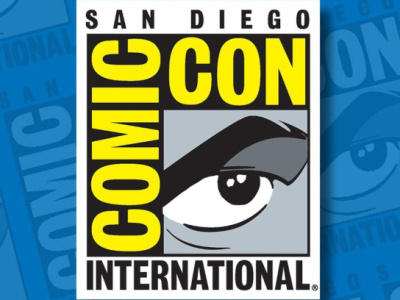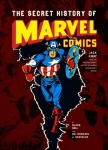 Three recent titles help bridge the audience and market gap between business books and comics.
Three recent titles help bridge the audience and market gap between business books and comics.Take it from me: attempting to combine business writing and comics is not always easy. The business side of comics, both historically and in the present day, explains a lot about the current state of the industry and the artform, but people who like comics have lots of exciting visual stories competing for their attention. Why read about the sausage-making?
There’s also a lot that comics could teach business and marketing professionals about communication. But, you know, comics... "Zap! Bam! Pow!" Aren’t we too busy making money to bother with that kind of thing?
Despite these challenges, the genre of the comics business book has gained in popularity since the turn of the decade. We’ve seen non-fiction business-themed graphic novels like The Adventures of Johnny Bunko by Daniel Pink (drawn by Rob Ten Pas), Economix by Michael Goodwin (drawn by Dan E. Burr) and The Influencing Machine by Brooke Gladstone (drawn by Josh Neufeld). We’ve seen business-of-comics books like Marvel: The Untold Story by Sean Howe and Comic-Con and the Business of Pop Culture (by yours truly). And we’ve seen a growing attention to comics and sophistication about their relationship to technology and business trends in the pages of publications like FastCompany, Wired, TechCrunch and Forbes. It’s fair to say, this is a thing.
Here are three recent examples of books that attempt to square the comics-business circle using very different techniques.
The Secret History of Marvel Comics, by Blake Bell and Dr. Michael Vassallo (Fantagraphics Books, 2013), is actually two books in one. The first 100 pages are a painstaking and meticulously-researched examination of the earliest days of the Marvel-Timely-Atlas publishing enterprise. The authors trace the career of publisher Martin Goodman, a second-tier pulpsmith whose sketchy business practices kept him a half step ahead of his creditors and underpaid creators. In 1939, Goodman decided to jump onto the comics bandwagon after seeing the success of his one-time partners Harry Donnenfeld and Louis Silberkleit. The rest, as they say, is history.
This section of the book not only brings to light previously unknown historical details from comics’ golden age, but illustrates how the business practices, values and class-based resentments from the seedy underbelly of the 1930s publishing world embedded themselves into the DNA of the comics industry, where they persist, in somewhat evolved form, to this day.
The second half of the book caters more to comics aficionados than business readers, offering capsule biographies and an amazing selection of rare art from the roster of creators who contributed to Marvel’s earliest days. This includes previously unseen work from folks like Jack Kirby, Bill Everett, Joe Maneely and Al Williamson, all presented with Fantagraphics’ customary attention to design and detail.
Mashing together a business history book and an art book is certainly one solution to the marketing problem. Paradoxically, because each section was so excellent but abbreviated to make room for the other material, it left me feeling that the whole was less than the sum of its parts.
At a completely different end of the spectrum, See What I Mean: How to Use Comics to Communicate Ideas, by Kevin Cheng (Rosenfeld Books, 2012), is a graphic work intended almost exclusively for a professional/business audience. Cheng is a high-tech entrepreneur with a background in user experience design. He’s also a close and attentive devotee of the Scott McCloud school of comics media studies, and See What I Mean is essentially Understanding Comics for a new generation of digital communications and marketing creative directors.
As with The Secret History of Marvel Comics, See What I Mean is two books in one: a prose version for traditional business audiences and a comic-style version of the same material to demonstrate the ideas in action. Cheng covers a lot of storytelling technique at a breezy pace, not always doing justice to the amount of hard work that goes in to making it look easy. But the book really shines by giving examples of how comics can work in a business context (sales training, technical documentation, etc.) and by giving creative folks inside organizations good arguments to convince traditional-minded bosses to say yes to comics-style projects.
Finally we come to Super Graphic: A Visual Guide to the Comic Book Universe, by Tim Leong (Chronicle, 2013). This book uses infographics, all the rage in business and online media these days, to convey all manner of geeky facts and figures about comics. There’s a timeline graphic depicting the rise and fall of every significant comic publisher from the Golden Age to the present, a Venn diagram of Bullpen nicknames assigned by Stan Lee, and a flowchart for what to do if you’re the Punisher (all decision outcomes eventually lead to "Kill Him!"). There are scatter charts and mind maps and radial bar graphs and data visualizations of every kind--all beautifully designed and presented at the highest print production value.
For obvious reasons, words fail in describing the complete awesomeness and off-the-wall creativity that saturates every page of this volume. If you’re a comics nerd, the facts alone are mind-boggling and endlessly amusing. But if you are a business person, the book is a primer on how to present all kinds of statistical data and information graphically for maximum impact. The only knock on Super Graphic is that Leong occasionally shifts gears unannounced between statistical data and personal opinion as the basis for a graphic (come on, Bart Allen isn’t that unpopular!).
-- Rob Salkowitz (@robsalk) is author of Comic-Con and the Business of Pop Culture and is working on a new project on the future of marketing and retail in the digital age.
The opinions expressed in this column are solely those of the writer, and do not necessarily reflect the views of the editorial staff of ICv2.com.




